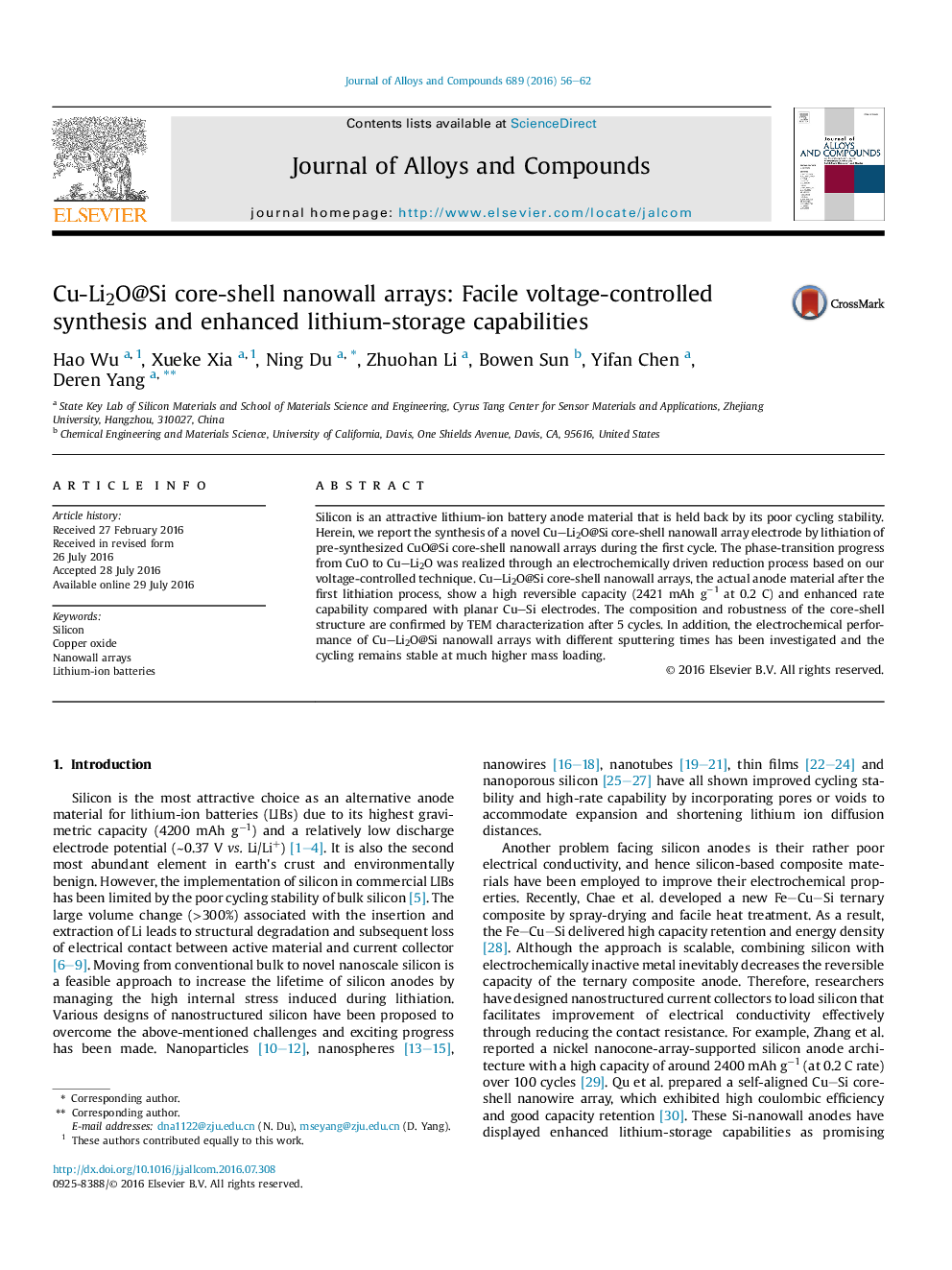| Article ID | Journal | Published Year | Pages | File Type |
|---|---|---|---|---|
| 1605106 | Journal of Alloys and Compounds | 2016 | 7 Pages |
•CuLi2O@Si nanowall arrays were synthesized by lithiation of pre-synthesized CuO@Si nanowall arrays.•The CuLi2O@Si nanowall array electrodes show stable cycling and superior rate capabilities.•The voltage-control technique was integrated into the electrochemical testing procedure.
Silicon is an attractive lithium-ion battery anode material that is held back by its poor cycling stability. Herein, we report the synthesis of a novel CuLi2O@Si core-shell nanowall array electrode by lithiation of pre-synthesized CuO@Si core-shell nanowall arrays during the first cycle. The phase-transition progress from CuO to CuLi2O was realized through an electrochemically driven reduction process based on our voltage-controlled technique. CuLi2O@Si core-shell nanowall arrays, the actual anode material after the first lithiation process, show a high reversible capacity (2421 mAh g−1 at 0.2 C) and enhanced rate capability compared with planar CuSi electrodes. The composition and robustness of the core-shell structure are confirmed by TEM characterization after 5 cycles. In addition, the electrochemical performance of CuLi2O@Si nanowall arrays with different sputtering times has been investigated and the cycling remains stable at much higher mass loading.
